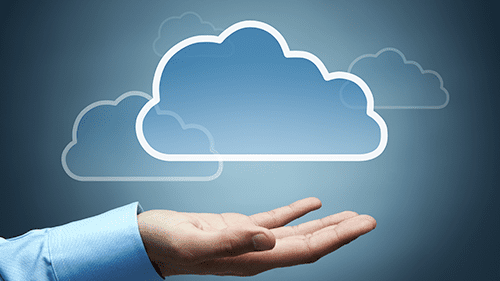Cloud computing security refers to a set of procedures, technologies, policies and controls that all work with one another to protect data and infrastructure in the cloud against external and internal cyber security threats. All of these cyber security measures are combined and configured to protect your cloud data, support regulatory compliance and ensure that your client’s data is stored securely in accordance with GDPR.
Cloud computing security measures also provide a set of authentication rules to every individual and device that attempts to gain access to private cloud data. This creates an additional security barrier against any malware or viruses trying to gain access to your information. Traffic is also managed and filtered to ensure that access to the cloud data is carefully monitored against any errors or unauthorized attempts of login. It also means that you are able to see who is exactly accessing the data, how long for and user roles can be adjusted if needed.
A huge benefit to cloud computing security is that it can be configured and completely tailored to your business’ needs in one place. This reduces administration time and your IT team is able to focus on other important areas of the business allowing you to grow and continue your development without any interferences.
Security risks of cloud computing
Businesses and organisations are beginning to shift more and more workloads and data to the cloud (1). However, many are still quite sceptical about migrating fully to the cloud over a few concerns about cyber security risks of cloud computing.
The main security risks of cloud computing:
- Data and malware breaches
- Compliance violations
- Unable to monitor the transit of data to and from the cloud
- Lack of full control over sensitive data accessibility
- Unable to prevent internal malicious threats and the misuse of data
- Loss of data
All of the above security risks of cloud computing are completely understandable and were valid when cloud was first introduced but now, when implemented correctly, cloud computing security is just as reliable as traditional IT infrastructure.
How security gets integrated in cloud computing
Cyber security plays a huge role in cloud computing and ensuring that data is kept secure against malware and potential breaches. This is how security gets integrated in cloud computing:
- Use of strong passwords and multiple authentication processes
- Identity management
- Maintaining a robust firewall and use of encryption
- Undergoing Cyber Essentials and Cyber Essentials Plus
The cloud is everywhere and is completely adaptable to your business and its current needs. It provides you with the tools designed to work with your budget and size, data is completely accessible wherever you may be in the world and provides 24/7 access to clients, vendors and employees to allow your business to continue growing and reach those all important goals.
There are so many benefits to using the cloud including its reliability and ultimate dependability. More and more businesses are migrating their systems to the cloud as it allows them to continue operating efficiently at their current and even bigger scale. It also reduces technology costs that normally come with the additional administration and IT time and uses agile systems to give your business that unique competitive edge.
What is security management in terms of cloud computing?
Security management in terms of the cloud computing relates to a set of strategies specifically designed to provide businesses with accessibility to cloud applications and networks that enable them to efficiently manage their data while limiting any potential threats and vulnerabilities. There are several security managements in terms of cloud computing methods that are used:
- Assess your cloud computing security: You need to spend significant time carefully analysing and identifying the cloud services that you are using across your business and checking their security and for any potential vulnerabilities (2).
- Encrypting your data: Data encryption helps to protect your data and prevent it from being lost or damaged as it creates another barrier to accessing data.
- Managing users and devices: You need to consider implementing user roles and levels of permission in order to manage and restrict access where necessary. This allows for you to be in control of who and what device has access to what sensitive information, providing additional security.
- Reporting cloud activity: Conducting regular reports of cloud activity allows for you to assess your current procedures and understand the risks associated with them. Further adjustments can be made once these risks have been established to provide further security to your data.
The process of migrating over to the cloud is becoming more and more popular amongst businesses and organisations. However some are still resilient to this change fearing security risks that could come with the move over to cloud. If the cloud is implemented correctly it is just as efficient and reliable as your traditional IT infrastructure. For more information on Cloud Services or Cyber Essentials and ways to keep your organisation safe speak to our IT experts by calling on 0121 289 4477.

